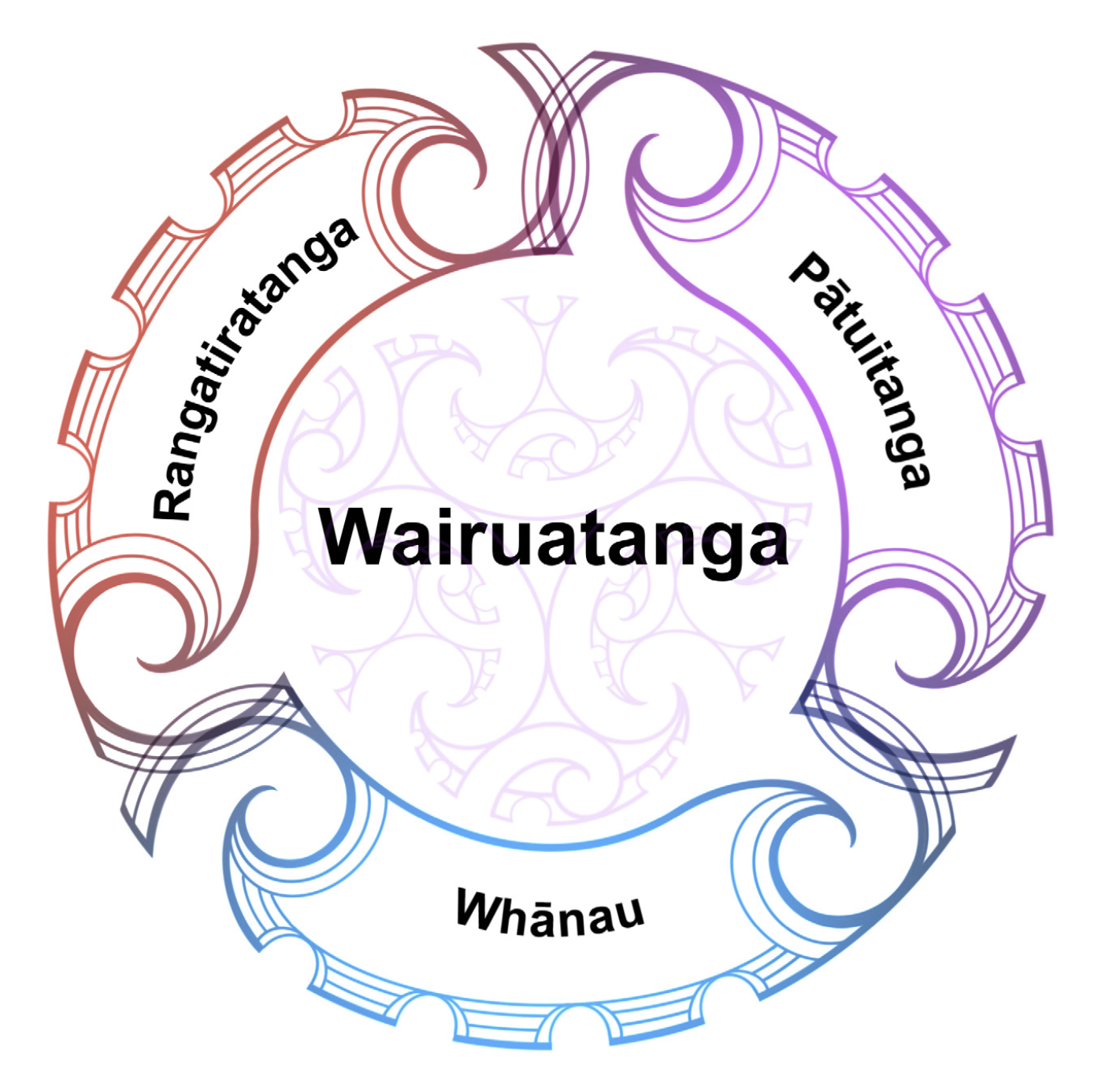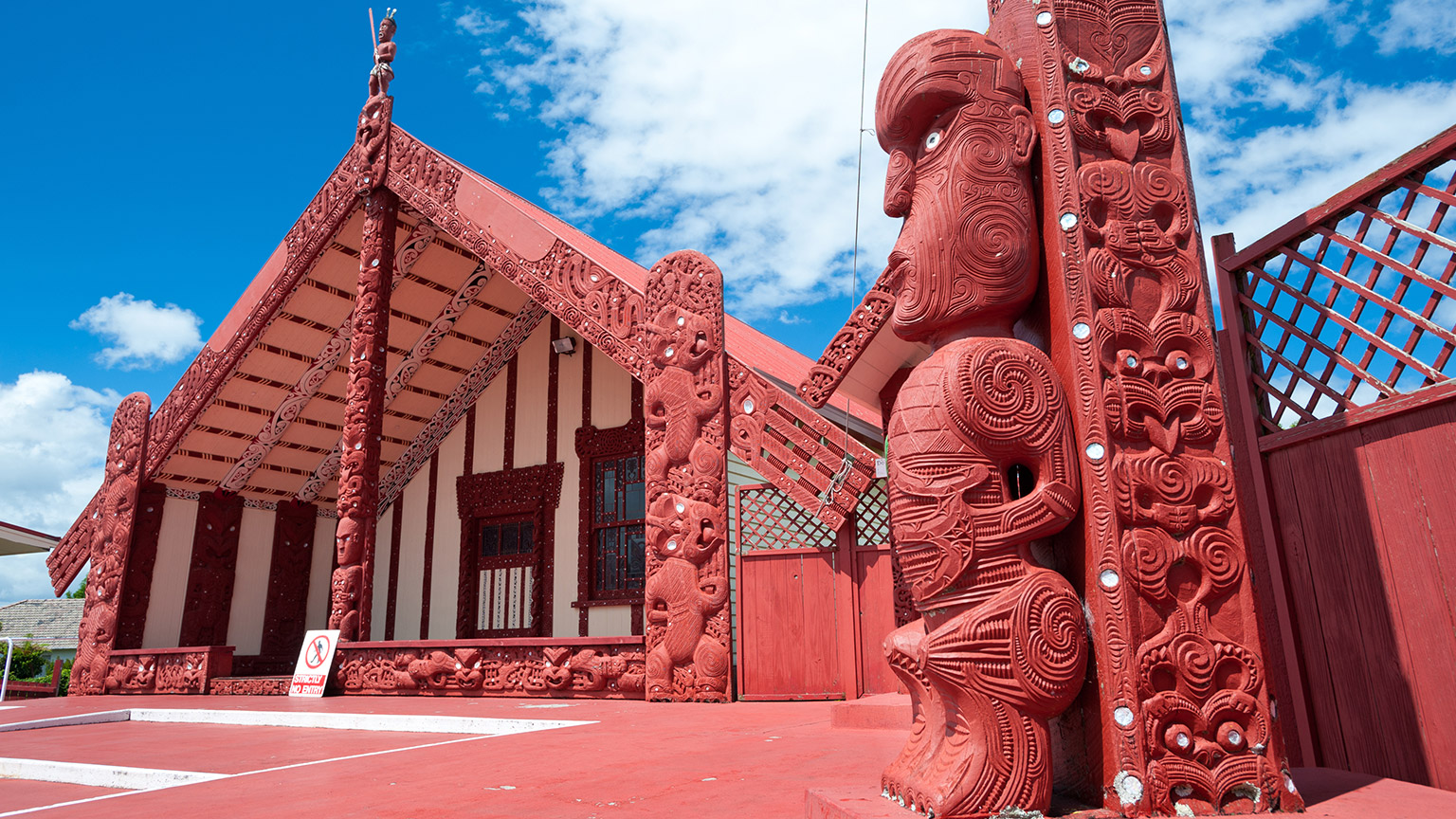Te ao means light; in the Māori worldview, light is linked with peace and understanding.
Te ao Māori encompasses Māori cultural concepts, beliefs, customs and protocols, including the Māori language (te reo Māori). The defining principle of te ao Māori is whānaungatanga (kinship), where all the elements of creation within the living and spiritual realms are interrelated.
Māori perspectives and culture are increasingly recognised and valued in Aotearoa. Aotearoa is becoming a culturally diverse society, making it increasingly important for people to be more culturally responsive.
To be culturally responsive is to recognise, reflect and validate the history, cultures, and worldviews of people’s cultures in practice. In Aotearoa, this places particular emphasis on te ao Māori. Cultural responsiveness is a process rather than a final destination.
Watch: Our cultural identity as New Zealanders. Our Kiwi-Tanga (17:41 Minutes)
Watch the following TEDx talk by Ellis Bryers. As you watch the video, note how the speaker reimagines the te whare tapa whā model, claiming it for all New Zealanders.
Te ao Māori in healthcare
Te ao Māori in the health and support sector involves a multifaceted approach encompassing cultural competency, whānau-centered care, Māori-led providers, cultural advisors, and language inclusion.
It seeks to ensure that Māori individuals receive care that respects and aligns with their cultural values, resulting in improved health outcomes and reduced disparities.
Te ao Māori is embedded into the health and support sector in various ways to ensure that Māori individuals and communities receive culturally appropriate care:
- The Māori Health Strategy (He Korowai Oranga)
- Whānau Ora
- Te Ao Māori Framework
- Māori health providers
- Cultural competency training
- Cultural advisors
- Whānau-centered care models
- Use of te reo Māori
Te ao Māori seeks to ensure that Māori individuals receive care that respects and aligns with their cultural values, resulting in improved health outcomes and reducing inequalities.
Reading
Click on the link to access the document Bullied by a doctor, beaten by the health system. Read the article and complete the activity that follows.
In healthcare, te ao Māori means respecting the holistic nature of Māori health that links physical illness to emotional and spiritual wellbeing.
The Health Quality and Safety Commission/Te Tāhū Hauora is a governmental agency tasked with improving health and disability support services. They developed the Te Ao Māori framework in 2022, aiming to improve health outcomes for Māori, reduce health inequalities and increase the use of te ao Māori and mātauranga Māori.

The framework and the accompanying implementation guide seek to:
- Bring about more meaningful partnerships between the Crown and Māori that reflect equitable resourcing, decision-making, service design and delivery as both partners work together to improve Māori health outcomes.
- Improve understanding and application of cultural competency and literacy within health organisations to increase Māori engagement with and access to services.
- Support health organisations to develop appropriate policies, strategies and planning systems that reflect a greater understanding of and responsiveness to the issues and barriers experienced by Māori.
(Ref: Te Ao Māori Framework Implementation Guide)
Reading
Click on the link to access the Te Ao Māori Framework Implementation Guide. Read the document and complete the activity that follows.
Tikanga Māori literally translated means the “right” Māori way of doing things.Natalie Coates
In Māori terms, following tikanga means behaving in culturally appropriate ways. Tikanga is based on the values of whānaungatangata (belonging), kaitiakitanga (guardianship) and manaakitanga (hospitality). It is woven into all aspects of life and can be seen in everyday tasks like cooking, as well as in formal activities like the pōwhiri (welcome).
Tikanga is the traditions and knowledge on a subject, customs and ways a community operates that identifies them as a group and defines their culture. Tikanga is developed over time and protected for future generations. For example, the tikanga that surrounds tangihanga (funeral rites) has been shaped over centuries. Tikanga may be shaped by physical or environmental conditions. For instance, tikanga says that people should remove their shoes before entering the wharenui at a marae so that dirt and dust are not brought into a sacred place. However, some marae require shoes to be left on – such decisions are made by the tangata whenua.
Tikanga can vary among different iwi (tribes) and hapū (sub-tribes). Despite this variation, there are several common areas that tikanga encompasses.
- Whakapapa: the genealogical connection that Māori have with their ancestors. It is an essential aspect of tikanga and establishes relationships, rights, and responsibilities within the community.
- Pōwhiri: the traditional Māori welcoming ceremony. It involves a series of rituals and protocols to acknowledge and welcome visitors onto the marae (traditional meeting grounds).
- Karakia: traditional Māori prayers or incantations used to invoke spiritual guidance, protection, or blessings. They are performed in various settings, such as the beginning or end of a gathering, before meals, or during specific ceremonies.
- Tangihanga: the Māori funeral customs and practices. It involves a series of rituals to mourn the deceased, pay respects, and support the grieving whānau (family).
- Manaakitanga: emphasises the value of hospitality, respect, and care for others. It involves showing kindness, generosity, and support to visitors, guests, and community members.
Activity
Complete the following research activity on aspects of tikanga.
Kawa
Kawa are the protocols that operate on a marae with particular emphasis on pōwhiri (welcoming) and whaikōrero (speech-making). Each marae will have its own kawa.
Read the following article from Te Ara, Kawa of the marae. This explains some of the aspects of te kawa o te marae and also how it can vary between tribal areas.
Watch: Tikanga - Tikanga Series of Videos (14:13 Minutes)
Watch this video on tikanga and kawa. Note how they differentiate the kawa and the tikanga of a pōwhiri.
Activity
Complete the following activity on tikanga concepts.
Te Reo Māori
There is an inherent connection between language and culture: language is embedded in culture and also expresses culture.Te Kete Ipurangi
Some of the clients you provide care for may speak te reo Māori. Learning some words will be invaluable in your work as a caregiver.
Watch: The Importance of Te Reo (2.20 Minutes)
This video demonstrates the importance of using te reo when working with a man with dementia. While watching the video, think about how you could address this issue if you do not speak te reo yourself.
Complete the following activity on te reo Māori.
Explore
Click on the link to display the New Zealand Institute of Medical Laboratory Science’s Māori Words and Phrases for Scientists and Technicians. Scroll through the list of words provided. Note the terms relating to body parts and health issues.
Tikanga and support work
Tikanga involves support workers:
- Behaving appropriately in people’s homes, residential facilities and in meetings.
- Providing health care in an environment that is culturally sensitive to those using it.
- Acknowledging cultural protocols and protecting people’s rights to follow them.
This helps build trust and confidence in a relationship.
Tip
Knowing Māori culture is helpful when providing services to Māori clients. However, you must remember to consider individual preferences. Some tangata will not be engaged with their Māori heritage. Others will relate to more than one culture. It is better to discuss these preferences rather than make assumptions.
Person-centred care and tikanga
Previously, we covered the principles of person-centred care in relation to general support care in Health practices. The eight principles of person-centred care are:
- respect
- emotional support
- physical comfort
- information and communication
- continuity and transition
- care coordination
- involvement of family and carers
- access to care.
Reflection
Consider how a tikanga Māori approach complements the principles of person-centred care.
Reflect on how you could apply tikanga practices in a health and wellbeing setting.
Pepeha
Incorporating Māori greetings shows respect for the culture and acknowledges the diverse backgrounds of your support users. A pepeha greeting helps create a welcoming and inclusive environment where Māori patients feel valued and understood. It also demonstrates your commitment to culturally appropriate care, which is important for building trust and rapport with your users.
Practice
You created a pepeha earlier in the course. Using the following website as a guide, review your pepeha and ensure it is suitable for you to use as a support worker. Practice your pepeha so that you are ready to deliver it when required.
Whānau ora | Healthy families
As discussed earlier in the course, Whānau ora is a programme set up in 2003 programme jointly run by the Ministry of Health, Te Puni Kōkiri (Ministry of Māori Development) and the Ministry of Social Development.
Whānau ora is a fundamental philosophy for creating strong, healthy and empowered whānau. A strong, healthy and empowered whānau can make the most significant difference to Māori health and wellbeing.
Whānau Ora is based on the understanding that health and well-being are not just the absence of illness but also encompass physical, mental, emotional, social, and spiritual aspects of a person's life.
The approach emphasises a collaborative and culturally appropriate approach to health and wellness, where individuals and their families are empowered to take responsibility for their own health and work in partnership with health providers to develop solutions that are tailored to their specific needs.
Whānau ora work with community-based partners with a ‘by Māori, for Māori’ approach, who use local knowledge to provide a wraparound service to support tangata and their whānau to achieve whānau outcomes.
Reading
Read the Programmes page from the Whānau Ora website.
He Korowai Oranga
He Korowai Oranga is a Maori Health Strategy first launched in 2002. It was replaced in 2014 with a refreshed version. It is a framework for improving Māori health and reducing health disparities between Māori and non-Māori. It is an all-inclusive approach that considers physical, mental, emotional, and spiritual well-being and emphasises the importance of cultural identity, community engagement, and the recognition of Māori as Treaty partners.
The aim of the strategy is Pae ora – healthy futures for Māori. Pae ora includes three key elements:
- Whānau ora - healthy family.
- Mauri ora - health individuals.
- Wai ora - healthy environment.
Reading
Click on the link to open the Guide to He Korowai Oranga Maori Health Strategy. Read pages 5 and 6 about the three elements and reflect on how these elements could impact support work.
Mauri ora and wai ora
According to Mason Durie, Mauri ora rests on a secure cultural identity. Deculturation (cultural suppression) is associated with poor health. In order to promote health, the tangata must be secure in their own identity. This requires the ‘facilitation of Māori entry into the Māori world’. (Ref: Durie, Mason (1999), ‘Te Pae Māhutonga: a model for Māori health promotion’ Te Pae Māhutonga: A Model for Māori Health Promotion (cph.co.nz),
Wai ora is concerned with the natural world and with the spiritual elements that connect human wellness with the environment. A polluted environment is the antithesis of good health. “General health and support promotion must take into account the nature and the quality of the interaction between people and their surrounding environment”.
(Ref: Durie, Mason (1999), ‘Te Pae Māhutonga: a model for Māori health promotion’)
Reflection
Reflect on how environmental issues such as polluted air and water or depleted food gathering sites might impact your client.
Reflect on ways to create opportunities for cultural engagement within the health and support sector.
